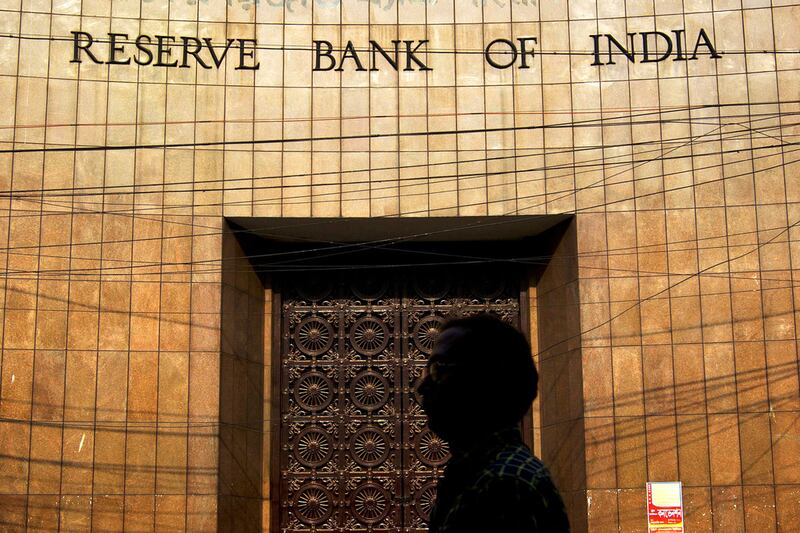MUMBAI // Indian banks are set to remain under pressure, weighed down by bad loans and weak profitability and with state lenders in particularly bad shape, analysts have warned.
Despite some signs of improvement in India’s economic situation, the banking sector is an area of concern.
The poor asset quality in banking is expected to persist over the coming year, Crisil Ratings, majority-owned by Standard & Poor’s, said last week.
Public sector banks are in a far worse state than private sector lenders “as they reel under asset quality and profitability pressures”, the ratings firm says.
Profitability of banks is set to remain weak, with return on assets flat at 0.8 per cent in the current financial year, which runs until the end of March, according to Crisil.
Bad loans are expected to rise this year as slippages of the stock of restructured assets to non-performing assets continues, says Rajat Bahl, the director of Crisil Ratings. Many of these bad loans stem from stalled infrastructure projects which have been held up because of problems over land acquisition or environmental clearances, for example.
Private sector banks have remained relatively resilient with substantially fewer weak assets than state banks and less exposure to vulnerable sectors such as infrastructure.
VK Vijayakumar, an investment strategist at Geojit BNP Paribas, says that an area of concern for India is “the rising NPLs [non-performing loans] of the banking system, particularly of the public sector banks …. constraining their ability to lend”.
Gross non-performing assets of banks are expected to rise by 600 billion rupees (Dh34.73bn) to 4 trillion rupees this year, according to Crisil.
“Even with the interest rates expected to come down in the current fiscal, we believe that the ability of banks to hold on to this rate cut is going to be limited and they will have to pass on most of these rate cuts and so the gross margins are not expected to improve materially,” says Mr Bahl.
Private sector banks have been more stable in their capital adequacy ratios and have a better ability to raise capital compared to India’s public sector banks, according to Crisil. It forecasts that public sector banks will grow at half the pace of private banks over the next four years. Private sector banks are set to receive a return on assets of 1.6 per cent in this financial year compared with 0.5 per cent for state banks.
But the government is expected to prop up state banks.
“We believe that the government is fully standing behind the public sector banks. The government is unlikely to allow any bank to fail in India – public banks especially,” says Pawan Agrawal, the chief analytical officer at Crisil Ratings.
The IMF last month warned that a “significant share of debt … in India … is owed by firms with relatively constrained repayment capacity in terms of interest-coverage ratios”.
A large share of corporate debt at risk and low “loss-absorbing buffers” are threats to India’s financial stability of its banking system, according to the IMF.
“We see little scope for significant valuation upsides in banking stocks,” analysts at Emkay Global Financial Services, in Mumbai, wrote in a recent report. “Slower-than-past business growth, limited scope for margin expansion and the likelihood of restructured loans defaulting could keep valuations modest. The key risk to our call is a sharp spurt in economic growth, more than estimated.”
They note that private sector banks are well placed to continue outperforming the overall sector.
R Gandhi, the deputy governor of the Reserve Bank of India, has said that public sector banks “need a hard relook on their structure, functioning methods and financial and risk management”.
Public sector banks dominate the market, accounting for about 72 per cent market share as of the end of March 2014, according to data from the RBI. India’s private banks have a share of 21 per cent and foreign banks 7 per cent.
With the economy positioned to expand over the coming years, India’s banking industry is expected to become the third largest in the world by 2025, according to a report by KPMG.
As this growth takes place, private sector banks are expected to increase their share of assets.
Last year, the RBI issued two new banking licences – to IDFC, an infrastructure lender in Mumbai, and Bandhan, a Kolkata microfinance organisation – after the central bank allowed corporate houses and non-banking finance companies to apply for licences. These were the first to be issued in the country in more than a decade.
The RBI has said that it plans to issue more licences. UAE Exchange, a remittances firm, was among the 25 companies that applied for licences but failed to secure one. The company has indicated that it would try again when the RBI opens up the next round of applications.
Foreign lenders could also be in a position to grow their share of the market.
The central bank has been trying to encourage foreign banks to set up subsidiaries in India after it changed the rules in 2013 to make it easier for them to open branches and potentially take over local companies if they set up wholly owned subsidiaries.
Only 35 per cent of Indians have bank accounts, according to a World Bank survey. Many Indians in rural areas in particular do not use banking services.
Foreign banks have largely focused on specialised products in India, such as working on complex products for large corporates and multinational accounts, rather than getting involved in financial inclusion for the masses. There are about 40 overseas banks in the country, which make up a tiny proportion of India’s network of branches, at just 0.3 per cent. Standard Chartered, Citibank and HSBC are the “big three” foreign lenders in India.
Singapore's DBS Bank last week revealed that it had become the first foreign lender to apply for approval to operate as a wholly owned subsidiary in India, although it has struggled with bad loans in the country, The Economic Times reported.
“We want to scale up our presence in India from a corporate bank to a universal bank,” according to Piyush Gupta, the chief executive of DBS. “We can rebalance our resources and grow our book in India – there are very few western banks who are in such a mode.”
business@thenational.ae
Follow The National's Business section on Twitter





